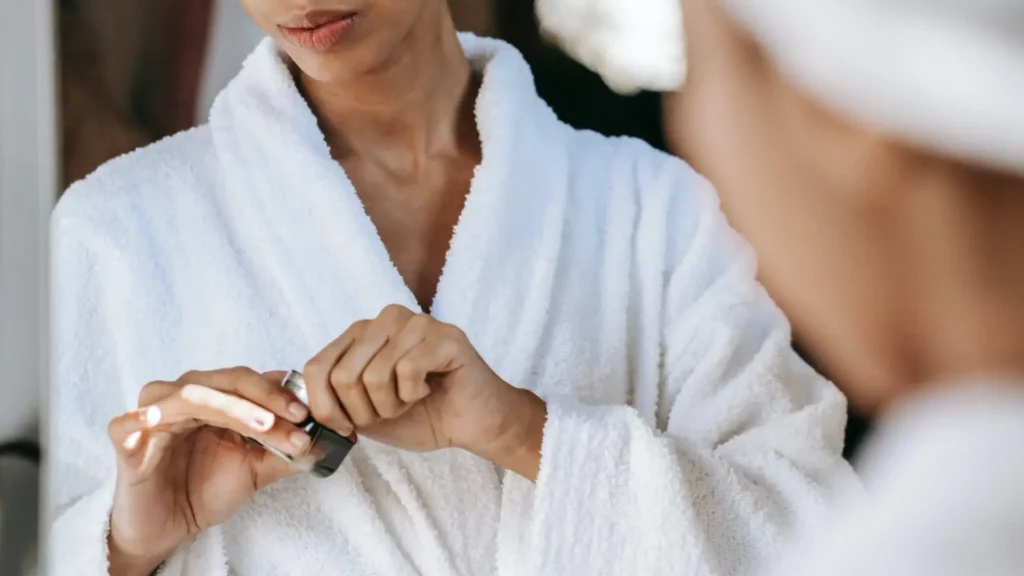The search for the elixir of youth has been a human obsession since time immemorial. While eternal youth might still be a thing of legend, our understanding of aging and how to combat its signs has come a long way. Today, we’re turning our focus towards a natural superfood – spirulina – and its potential role in anti-aging, particularly for skin health.
What is Spirulina?
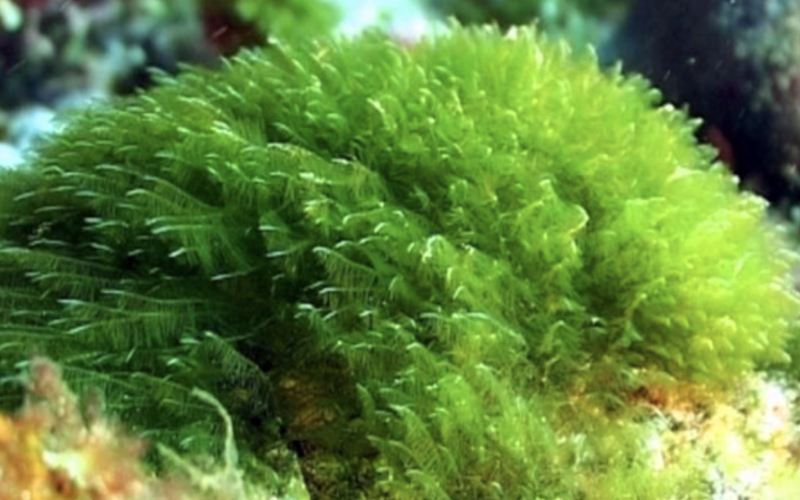
Spirulina is a type of cyanobacteria, commonly referred to as blue-green algae. It’s an organism that thrives in both fresh and saltwater environments. It’s named for its spiral shape and intense blue-green color. But don’t be fooled by its simple exterior, this aquatic dynamo is a powerhouse of nutrition.
Historically, spirulina has been consumed by humans for centuries due to its rich nutritional profile. It was a staple in the diet of the Aztecs and other Mesoamerican cultures. In modern times, it’s harvested from both natural sources and specially designed algae farms, then processed into tablets, powders, or liquids for consumption. It’s often hailed as a ‘superfood’ because it’s high in protein, vitamins B1 (thiamine), B2 (riboflavin), and B3 (niacin), iron, and magnesium, among other nutrients.
To make it more relatable, think of spirulina as a tiny green factory that produces a wide range of nutrients, helping to fuel our bodies with essential vitamins and minerals. Despite its humble origins in the water bodies, it has now become a key player in the world of health and skincare.
Rich nutritional profile
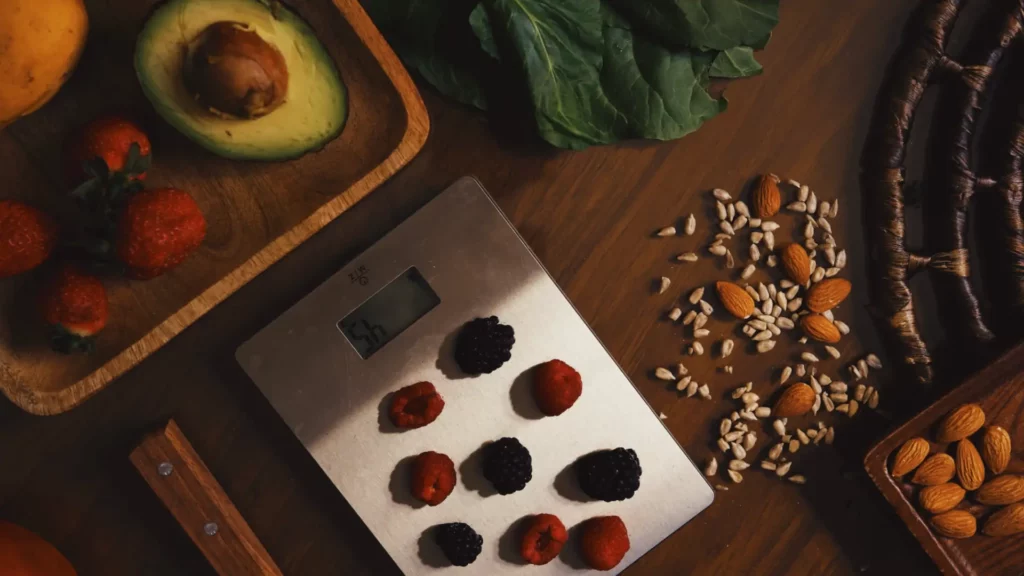
Spirulina’s nutritional profile is a significant reason why it’s often hailed as a “superfood.” Here’s a closer look at the nutrients it packs and why they’re beneficial.
- Protein: Spirulina is exceptionally high in protein, with around 60-70% of its dry weight being protein. That’s more protein by weight than you’d find in beef, poultry, or fish! Proteins are essential building blocks for our bodies, necessary for everything from muscle growth to cellular repair.
- Vitamins B1, B2, and B3: These vitamins, also known as thiamine (B1), riboflavin (B2), and niacin (B3), play vital roles in energy production and cell metabolism. They help our bodies convert food into energy, keep our skin healthy, and support nervous system function.
- Iron: Iron is a critical component of hemoglobin, the substance in red blood cells that carries oxygen from our lungs to the rest of our bodies. An iron-rich diet can help prevent anemia and boost energy levels.
- Magnesium: This mineral is essential for over 300 biochemical reactions in the body, including nerve and muscle function, maintaining a steady heartbeat, and supporting a healthy immune system.
Besides these, spirulina also contains significant amounts of vitamins E and K, several B-vitamins, and minerals such as calcium, potassium, zinc, and selenium. Additionally, spirulina is rich in essential fatty acids and powerful antioxidants, which have been shown to protect against oxidative damage.
Think of spirulina as a nutrient-dense salad bowl. Just like a salad combines various vegetables to give you a wide range of nutrients, spirulina combines an array of essential vitamins, minerals, and other beneficial compounds, offering them in one compact package.
The Science of Aging

Aging is a natural part of life, a process that occurs in every living being over time. To understand the science of aging, let’s imagine our body as a city. When the city is new and young, everything runs smoothly; buildings are new, roads are clear, and services operate efficiently. But as time passes, the infrastructure begins to wear down. Roads develop potholes, buildings start to crumble, and services might slow down. This is similar to what happens in our bodies as we age.
Specifically, our skin, which is like the city’s protective wall, begins to show signs of aging over time. These changes are similar to what happens to a wall exposed to wind, rain, and sun over many years. Initially, it may be smooth and robust, but over time, it may develop cracks, lose its smoothness, and change color. Similarly, young skin is typically smooth, elastic, and even-toned. But as we age, it may become rougher, less elastic, and more uneven in tone, and wrinkles or age spots may appear.
One of the main scientific reasons behind these changes is a process called oxidative stress. This is like a city experiencing a rise in pollution. In our bodies, oxidative stress happens when there’s an excess of harmful molecules called free radicals and not enough antioxidants (our body’s cleanup crew) to neutralize them. Just as pollution can damage a city’s infrastructure, free radicals can damage our cells, including skin cells, leading to signs of aging.
However, just as we can take steps to reduce pollution and repair a city, we can also influence the aging process. In the following sections, we’ll explore how spirulina, with its high nutrient content and antioxidant properties, might help slow down the aging process, particularly for our skin.
Antioxidants and their role in combating oxidative stress

To understand the role of antioxidants, it’s important to first grasp the concept of oxidative stress. Imagine oxidative stress as a city under siege by tiny invaders known as free radicals. These free radicals are unstable molecules that can cause damage to our cells – a bit like tiny graffiti artists vandalizing our city walls, or in this case, our body’s cells.
Free radicals are produced naturally in our bodies through processes like digestion and energy production. However, they can also come from external sources, like pollution, tobacco smoke, and radiation. When the number of free radicals outweighs the body’s ability to deal with them, it leads to a state of oxidative stress.
Here’s where antioxidants come into the picture. If free radicals are like graffiti artists, then antioxidants are like a dedicated cleanup crew. Antioxidants are molecules that can safely interact with free radicals and neutralize them, preventing them from causing more damage.
They work by donating an electron to the free radicals, thereby stabilizing them and stopping their destructive path. It’s like the cleanup crew painting over the graffiti, restoring the city walls to their original state.
But what happens if there are too many graffiti artists and not enough cleanup crew? The city starts to show signs of wear and tear. Similarly, as we age, our bodies produce more free radicals and fewer antioxidants, leading to more oxidative stress. This results in visible signs of aging, such as wrinkles, age spots, and loss of skin elasticity.
In the next sections, we’ll look at how spirulina, known for its rich antioxidant content, could help beef up our body’s cleanup crew, combat oxidative stress, and potentially slow down the aging process.
Spirulina and Anti-aging
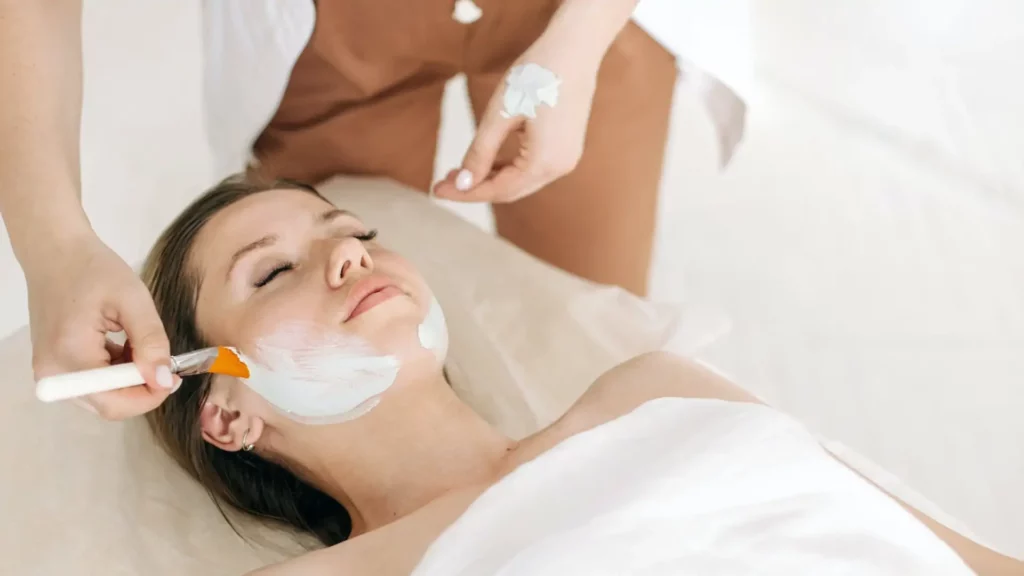
The connection between spirulina and anti-aging lies largely in its rich antioxidant content. Antioxidants, as we learned earlier, are like our body’s cleanup crew that tackles the harmful effects of free radicals, the graffiti artists causing damage to our cells.
The high antioxidant content
Spirulina is a veritable treasure trove of these protective antioxidants. It contains vitamins E and C, selenium, beta carotene, and a powerful antioxidant called phycocyanin that is responsible for spirulina’s distinctive blue-green color.
To better understand the potential impact of these antioxidants on aging, let’s consider our body as a car. Just as a car experiences wear and tear over time and requires regular maintenance to run smoothly, our bodies also accumulate damage over time due to factors like free radicals. Antioxidants are like the servicing and maintenance that keep the car running smoothly, reducing the impact of wear and tear.
In the context of our bodies, antioxidants neutralize the harmful free radicals, slowing down cellular damage that leads to aging. By combating free radicals, antioxidants help maintain the health and integrity of our cells, including skin cells, which can result in slower aging, improved skin health, and reduced appearance of wrinkles and age spots.
In essence, the high antioxidant content of spirulina may serve as a protective shield for our cells, potentially delaying the onset of aging symptoms and maintaining the youthful appearance of our skin. However, while these benefits are promising, it’s important to remember that spirulina is part of a holistic approach to health and anti-aging, and should ideally be combined with a balanced diet, regular exercise, and a healthy lifestyle for optimal results.
Scientific research
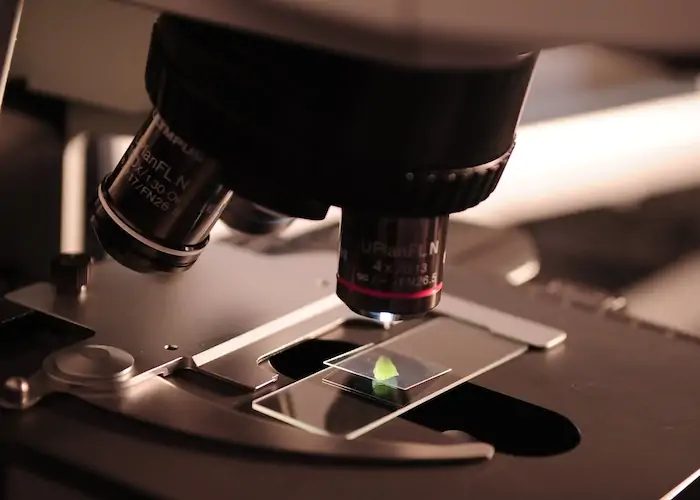
There was a study done in Japan that explained the benefits of spirulina, here are the full details of that study:
Study Title: “The Endless Spring of Japanese Seniors and the Microalgae Spirulina Platensis”
Author: Dr. Ingfried Hobert
Publication: Das Algen Gesundheitsbuch
Study Summary:
This study by Dr. Ingfried Hobert investigates the popular use of Spirulina, a type of microalgae, among the older Japanese population. The research highlights that Japan has seen a surge in the import and consumption of Spirulina, with the market skyrocketing from non-existent to $45 million in just a decade. The study reveals a noteworthy difference in the age groups of Spirulina users between the USA and Japan. While Spirulina is primarily consumed by the 20 to 40 years age group in the USA as a counter to lifestyle stress, in Japan, 73% of Spirulina users are over 50 years old, with a majority of them (57%) being women.
The research explored various motivations behind the older Japanese population’s Spirulina consumption:
- 45% of Spirulina consumers use it to address specific nutrient deficiencies.
- 28% take it for general well-being and health maintenance.
- 12% use Spirulina to ensure they’re getting a balanced diet.
Furthermore, the study examined the specific health benefits sought by users taking Spirulina to address deficiencies:
- 22% of consumers use it to balance blood sugar levels.
- 15% use it to improve eyesight.
- 14% use it to aid digestion.
One of the key findings of the study is the commonly used dosage of Spirulina among Japanese seniors, which is 4 grams per day. The study concludes that Spirulina is not viewed as a temporary trend among this demographic, but as a consistent part of their health routine.
The study also notes that Spirulina is rich in three substances known to have anti-ageing effects:
- Tyrosine: Believed to slow cellular aging and suppress hunger. It also plays a role in the coloration of hair and skin, adding to its anti-ageing effect.
- Vitamin E (Tocopherol): Known for preserving heart and vascular health and potentially delaying the ageing process.
- Selenium: Improves cardiac efficiency, reduces some types of toxicity, and may slow down the ageing processes.
Results:
The results from Dr. Hobert’s study suggest that Spirulina has gained considerable popularity among Japanese seniors, primarily due to its potential health benefits, including addressing nutrient deficiencies, enhancing overall well-being, and providing anti-ageing effects. Spirulina’s role as a dietary supplement that might improve eyesight, help balance blood sugar, and aid digestion is also noted. The consistent intake of Spirulina by this demographic, especially at a dosage of 4 grams per day, underscores its perceived value in maintaining health and combating the effects of ageing.
Proven by the results of scientific research
Research into spirulina’s anti-aging properties provides fascinating insights into how this superfood can contribute to skin health and longevity. Let’s look at some scientific studies that delve into this subject.

- Protection from Cellular Damage: A study published in the Journal of Cellular and Molecular Neurobiology showed spirulina’s potential to protect neurons (brain cells) from oxidative stress due to its high antioxidant content. This is particularly significant because oxidative stress is one of the primary drivers of aging.
- Reduction of Inflammation: Inflammation is a biological response to injury or harm, but chronic inflammation can accelerate the aging process. According to research published in the journal Marine Drugs, spirulina can help to reduce inflammation. The study found that spirulina inhibits the production of inflammatory molecules, acting like a natural anti-inflammatory agent. This property could help slow the aging process, as inflammation can accelerate cell aging and damage.
- Promotion of Skin Health: Spirulina doesn’t just work its magic from the inside; it can also enhance skin health when applied topically. Research from the Journal of Medicinal Food showed that topical application of a spirulina extract significantly improved skin elasticity and hydration. Improved elasticity can lead to fewer wrinkles and firmer skin – characteristics of more youthful skin.
These studies collectively suggest that spirulina, with its antioxidant, anti-inflammatory, and skin-enhancing properties, has a role to play in anti-aging. While more research is needed to fully understand spirulina’s potential, these findings offer a promising glimpse into how this superfood could help maintain youthful skin and slow down the aging process. As always, it’s essential to consult with a healthcare professional before starting any new supplement regimen.
Spirulina’s Skin Benefits
A treasure trove of nutrients, spirulina has impressive skin benefits that extend beyond anti-aging. Let’s take a closer look at how this superfood can contribute to your skincare routine.
1. Improved Skin Elasticity and Reduced Wrinkles
One of the key advantages of spirulina for skin health is its potential to improve skin elasticity. Remember our earlier analogy where the skin is compared to a city’s protective wall? A lack of elasticity is akin to that wall becoming rigid and brittle, prone to cracking. Spirulina, with its rich nutrient content, can help reinforce this wall, making it more flexible and resilient.
A study in the Journal of Medicinal Food found that a topical application of spirulina significantly improved skin elasticity and hydration. Like a revitalizing treatment for the city’s wall, spirulina can help the skin remain firm and less prone to wrinkling.
2. Skin Hydration
Proper hydration is crucial for maintaining the skin’s health and appearance, and spirulina appears to assist in this area as well. In the same study, researchers noted that participants who applied spirulina to their skin experienced improved hydration. This is similar to keeping our city’s wall well-maintained and moisturized, preventing it from drying out and developing cracks.
3. Acne, Eczema, and Psoriasis Relief
Spirulina’s anti-inflammatory properties can potentially aid in managing various skin conditions such as acne, eczema, and psoriasis. Each of these conditions involves inflammation. By reducing inflammation, spirulina helps to soothe these skin conditions, preventing further damage and promoting healing.
While there’s still a need for further clinical research to confirm these effects, many individuals have personally experienced spirulina’s skin benefits. For instance, Sarah, a 28-year-old woman, noticed a significant reduction in her acne breakouts after incorporating spirulina into her diet. “I’ve tried numerous products over the years,” she says. “But nothing worked quite as well as spirulina. It feels like I’ve finally found a natural remedy that actually works for my skin.”
Stories like this one, backed by growing scientific research, illustrate spirulina’s potential as a valuable addition to your skincare regimen. Whether consumed as a supplement or applied topically, spirulina may offer a range of benefits for healthier, more youthful-looking skin. Always remember to consult a healthcare provider or a dermatologist before starting new skincare treatments or supplements.
How to Use Spirulina

Spirulina’s potential in anti-aging is profound, and incorporating this superfood into your skincare and health regimen can be done in various ways. However, it’s essential to be mindful of potential precautions and side effects as well. Here’s your practical guide on how to use spirulina for anti-aging.
Internal Use:
Ingesting spirulina is one way to harness its potential. Spirulina is available consumed as a supplement. You can add it to your favorite smoothies, and juices, or even sprinkle it on your salads for an extra nutritional punch. Consistent consumption can help your body enjoy spirulina’s rich antioxidant benefits from the inside out.
Liquid Spray:
One of the innovative ways to use spirulina topically is through spirulina spray liquids, such as the Liquid Envy Extract Spirulina product. This spray-on product is designed to be used directly on the skin. Just a few spritzes and the skin can soak up the nutrients, including spirulina’s powerful antioxidants. It’s a quick and easy method that allows for easy absorption and potential immediate benefits.
Spirulina in Skincare Products:
Besides internal consumption, spirulina can also be used topically as part of your skincare routine. Just spray the liquid and rub it into the skin like a serum. These products can help deliver spirulina’s skin benefits directly where you need them most.
Potential Precautions and Side Effects
While spirulina is generally considered safe for most people, there are potential precautions and side effects to consider. Some individuals might experience mild side effects such as nausea, stomach discomfort, or headaches when starting spirulina supplements. Always start with a smaller dose and work your way up to allow your body time to adjust.
Furthermore, people with autoimmune diseases, kidney problems, or phenylketonuria should consult with their healthcare provider before starting spirulina. Likewise, spirulina can interact with certain medications, so if you’re on medication, it’s best to seek medical advice.
Harnessing spirulina’s anti-aging power can be as simple as a daily supplement or a spritz of spray on your face. With potential benefits ranging from skin rejuvenation to combating free radicals, it’s no wonder that this blue-green algae is making waves in the health and skincare sectors. As with any new regimen, always listen to your body and consult a healthcare provider if needed.
Product of Liquid spirulina extract
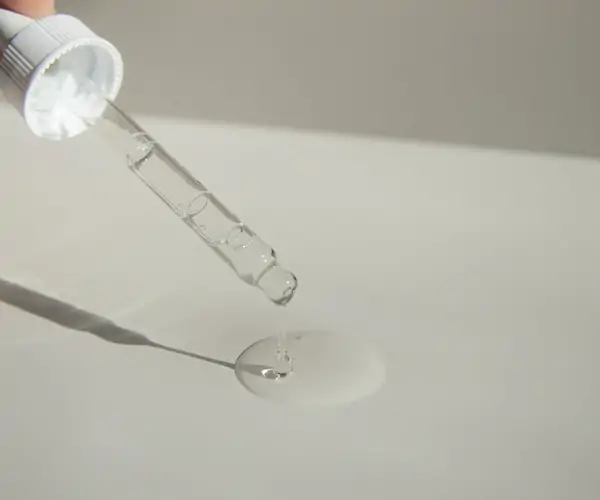
- Direct Skin Absorption: Spirulina liquid extract is specifically designed for topical application, allowing for direct absorption into the skin. Unlike other forms of spirulina that require digestion and absorption through the gastrointestinal tract, the liquid extract bypasses this process, ensuring that the beneficial compounds of spirulina are readily absorbed by the skin.
- Enhanced Bioavailability: The liquid form of spirulina extract offers improved bioavailability, meaning that the active ingredients are more easily absorbed and utilized by the skin cells. This increased bioavailability ensures that the anti-aging properties of spirulina are effectively delivered to the skin, maximizing its potential benefits.
- Concentrated Nutrient Content: Spirulina liquid extract is often concentrated, containing a high amount of bioactive compounds such as antioxidants, vitamins, minerals, and phytonutrients. These nutrients play a crucial role in combating aging by neutralizing free radicals, promoting collagen synthesis, and supporting skin health. The concentrated nature of the liquid extract ensures a potent dose of these anti-aging components.
- Targeted Application: The liquid form allows for precise and targeted application to specific areas of concern, such as fine lines, wrinkles, or age spots. By directly applying the liquid extract to these areas, you can focus on addressing specific signs of aging and optimizing the effects of spirulina on targeted skin regions.
- Hydration and Skin Nourishment: Liquid spirulina extract often contains moisturizing and hydrating properties, contributing to skin hydration and nourishment. Adequate hydration is vital for maintaining skin elasticity, suppleness, and a youthful appearance. The liquid extract can help replenish moisture, combat dryness, and support overall skin health, thereby reducing the visible signs of aging.
Conclusion
In conclusion, spirulina, with its abundant nutritional content and antioxidant properties, shows promise in the fight against aging. Whether consumed internally or applied topically, spirulina offers a range of potential benefits for skin health and anti-aging.
The concentrated nutrient content of spirulina liquid extract, along with its targeted application and enhanced bioavailability, makes it a superior product compared to other forms of spirulina. The direct skin absorption allows for efficient delivery of anti-aging compounds, promoting hydration, nourishment, and potentially immediate benefits.
Throughout history, humans have sought the elixir of youth, and while eternal youth remains a myth, embracing natural solutions like spirulina can aid in maintaining healthy and youthful-looking skin. Spirulina’s high antioxidant content helps combat oxidative stress, reduces inflammation, improves skin elasticity, and may alleviate skin conditions.
As we continue to unravel the science behind spirulina’s anti-aging properties, it is encouraging to explore the potential of this superfood in our skincare regimens. By incorporating spirulina into our diets or using it topically, we can tap into its rich nutrients and experience its potential benefits for our skin.
In the pursuit of healthy and vibrant skin, it is important to remember that spirulina is part of a holistic approach. A balanced diet, regular exercise, proper skincare practices, and consultation with healthcare professionals or dermatologists are essential for optimal results.
So, embrace the power of spirulina and embark on a journey to unlock its anti-aging potential. Together with a healthy lifestyle, spirulina can be a valuable ally in our quest for youthful and radiant skin.
